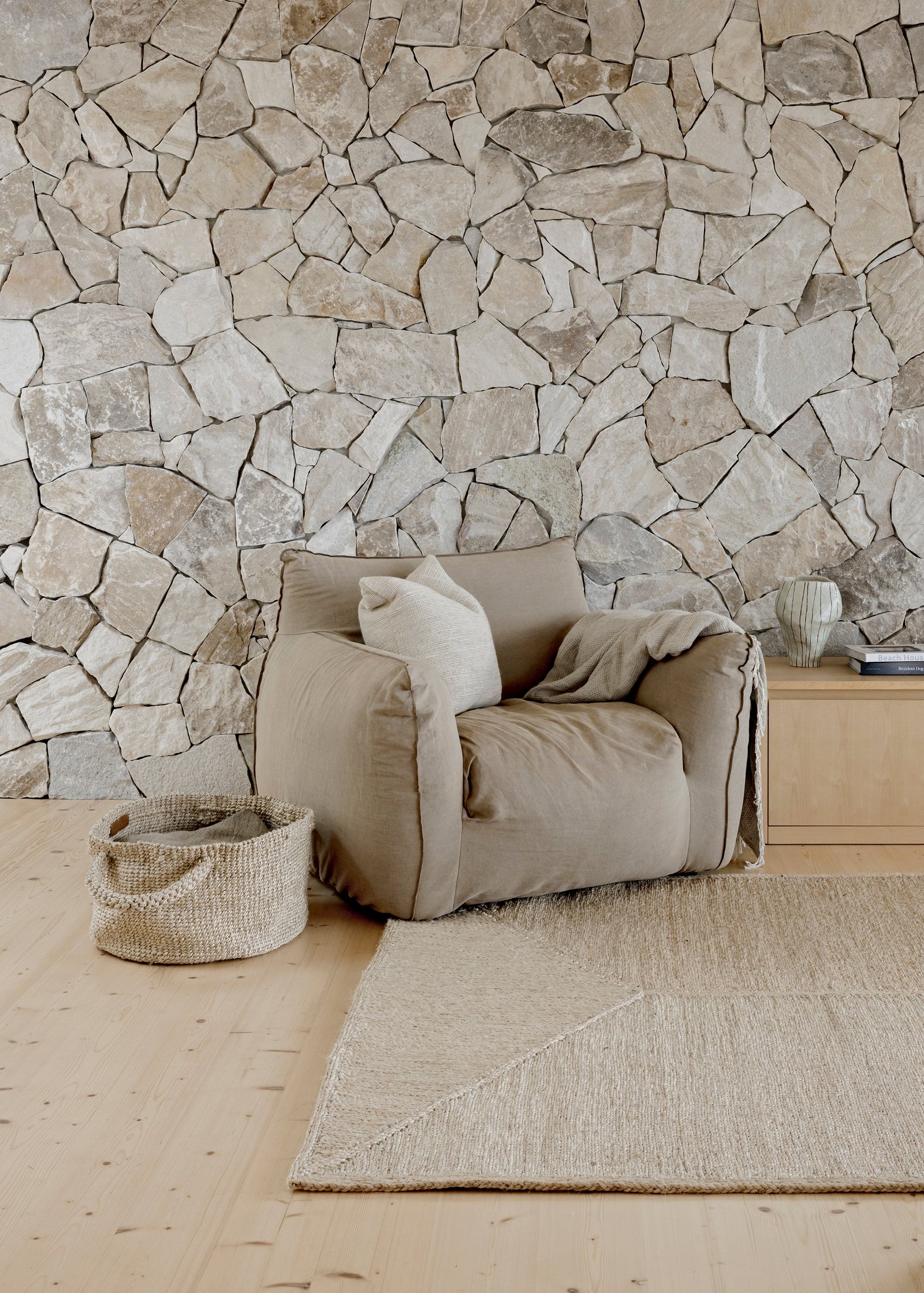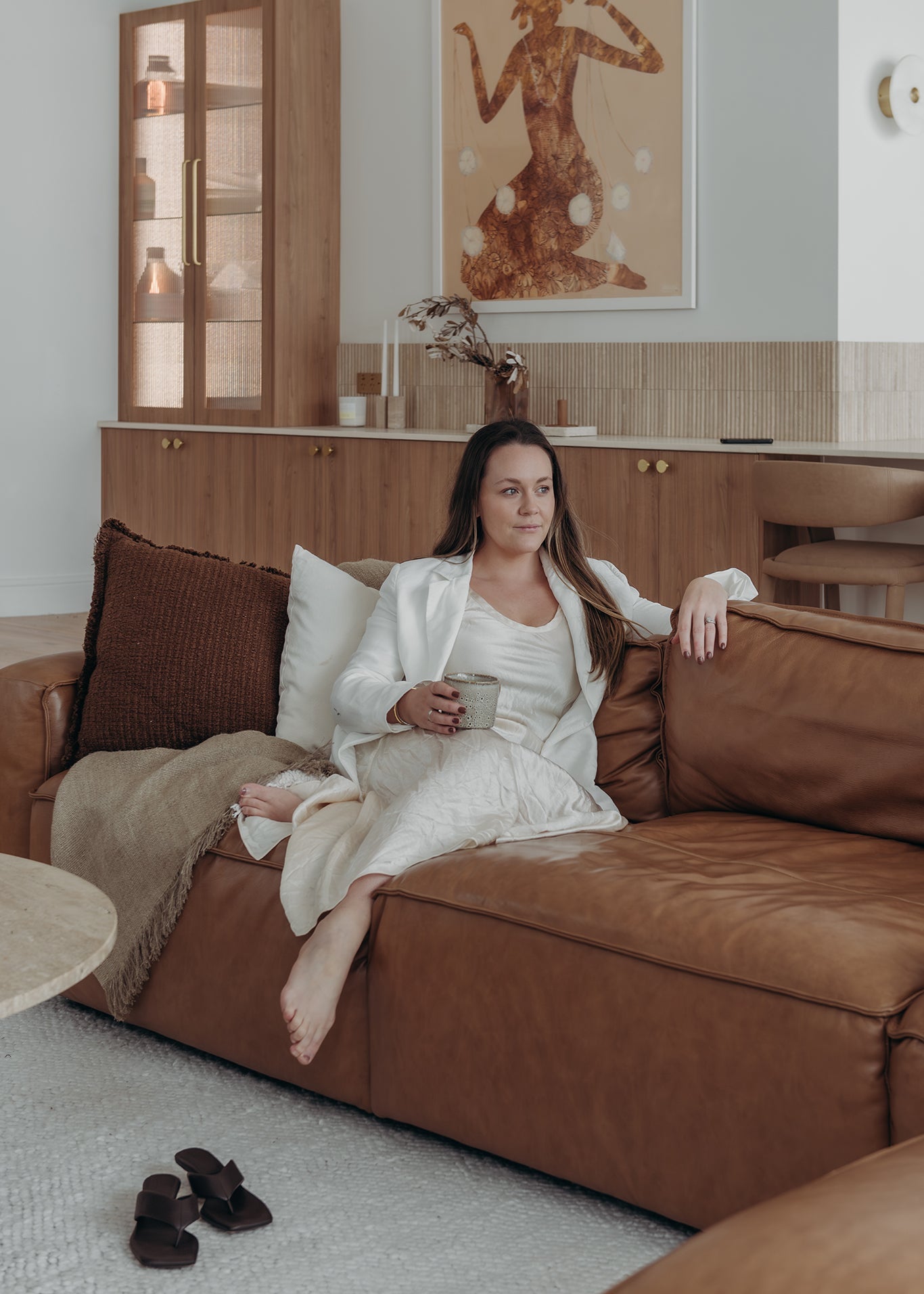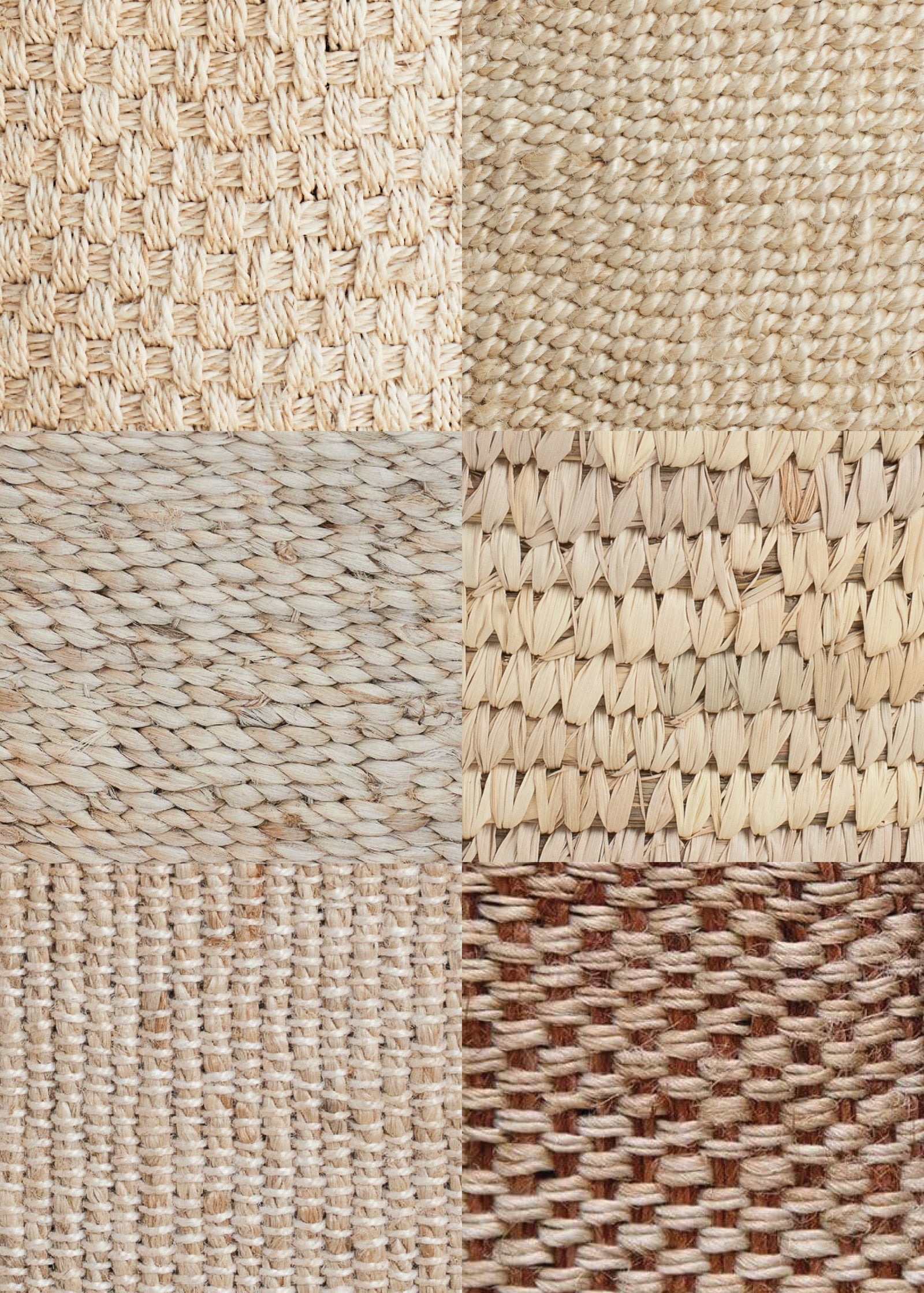Wall Art
Baskets
Rugs
TABLEWARE
Textiles
LIGHTING
DECORATIVE
BAGS
In Conversation with Nichola Dare of Aboriginal Contemporary

Nichola Dare is the owner and director of Aboriginal Contemporary: a vibrant visual art gallery in Sydney's eastern beach side haven of Bronte. When I phoned her to conduct our interview, she greeted me on the other end of the line with a warm, bubbly and refined welcome. Her distinct and rounded English accent and gentle tone of phrase left a gracious and lasting impression. One that I’m certain is shared amongst her colleagues and clients alike.
As we discussed Nichola’s love of art and her deep appreciation for women worldwide, I couldn’t help but associate the two (women and art) and their intrinsic ability to bring comfort, unity and renewal to the people around them. Most will agree, that as women, we are hard-wired to nurture and love. Nichola proved to be no exception to this rule, and acknowledged the profound women she has been fortunate to encounter through her work with the gallery.
It was Anatole France who said ‘In art as in love, instinct is enough’, and having had the pleasure of chatting to Nichola about her journey thus far, no truer statement can be applied to her wonderful existence and outlook on life. Here’s what we learned from Nicola about the power of women and community, and trusting your intuition no matter what…

In your own words, please tell us what you do for a living.
I have an Aboriginal art gallery, in Bronte in Sydney, and I’ve been open now for 8 years. I work very closely with a number of art centres in remote aboriginal communities across Australia. It’s important to me to work with directly with the art centres because that way we can ensure that artists whose art I represent are treated respectfully and that they’re paid properly. It ensures the ethical nature of the business that we do. Our practice also gives our customers the assurance that with their purchasing power they are perpetuating something worthwhile and with a lot of integrity. And the ultimate goal is to create financial security within the communities, particularly with the artists - and most of them are female artists. So there is a big push for this within my work. Actually, I heard Linda Burney MP speak recently at an International Women’s Day lunch, and she highlighted that the most important thing for women in the future, and now, is that they are financially independent. Because with financial independence comes choice.
Where did your journey with art start, and how did you find yourself to be running Aboriginal Contemporary?
My journey has all been because of a crossroads. I used to sell Indigenous textiles as part of a cross-cultural trade initiative with the women in Kashmir in Nepal. They would hand stitch indigenous designs onto cushion covers, and the designs had all been licensed properly, as it was an ethically thorough practice too. So that's where it started for me.
Also, I am originally from the UK but came to Australia about 13 years ago. I used to do the Paddington markets in Sydney, and a few others across the city, but my background in the UK was working in property and loosely in interiors and interior design. I'm not formally trained, but the textiles lead to my doing the markets in Australia.
After a while, an opportunity came up for me to open a gallery in Sydney incorporating the textiles, and it was suggested that I also source art. Specifically Aboriginal art. At the time I found it completely daunting, and I remember thinking 'oh gosh I’m not sure I can do this’ - but then I was very fortunate to be introduced to the art centres. I am now very much in love with the art and I go out to the communities for a proper bush trip every year; to see the work and make my selections. I think it’s quite unusual for gallery owners to make the trips to visit the communities, they used to, but not so much now… anyway that’s how it began!
I’m very lucky to have built some amazing relationships, and as a result, have been really fortunate to get some amazing art. It wasn’t a path I was consciously on, but I really love what I do and it has afforded me an incredibly flexible lifestyle bringing up my two girls, because we live behind the gallery. So I guess I could say that this path chose me.

Are the artists you work with primarily women?
Yes they are. I think I am right in saying that there are more female artists these days than male. In the communities, a lot of the artists come to art in their later years. Most of the female artists I work with are in their 70’s and 80’s. They’re incredible. The fact that they have lived life only coming into contact with westerners in their later childhood or early teens - I mean it is an extraordinary honour and privilege to be with them. Their incredible knowledge of country…it’s something that we (westerners) can’t really fathom. Their whole belief system is very, very different to ours. In Aboriginal culture, they say ‘you hear, to see, to think, to talk’, and it’s just such a different way of how we observe the world. We tend to talk first and then think about it - it’s completely different. It’s very beautiful being around them.
I am also aware that my aesthetic is very female. So if you put me in a room with 20 paintings by 20 different artists, and I didn’t know which ones were done by males or females, I would likely pick the female works. I’m just drawn to them. And you know, the men and women, they paint differently - they have different stories to tell, and they're very sacred.

What do you feel the practise of art does for these women?
Well beyond the sharing of stories and creating cultural lineage, I think the art centres are very extraordinary places. They are very positive places and they are often the only direct source of income for the communities. The concept of art in Aboriginal culture is many things, and the painting on canvas is just one interpretation of that. So they all come together, and paint together, these women. There are lots of people painting at one time, you will rarely get someone painting on their own, so it is very collaborative. The art centres are also a very potent spaces for cultural exchange intergenerationally within the communities. Often the painting will take place in groups outside of the centres as well. Everyone will go bush for a few days and paint together - everyone gets involved. It’s a really incredible thing. And I think importantly, these art centres are where the women can come together and feel empowered. It’s something quite special and it’s hard to articulate.


What do you love about women?
I love that they create communities. I think, we’re very good at making homes, and creating places where people want to belong.
What do you feel unifies women?
I think we all share an amazing power, even though it’s quite hard to access. I find the resilience in women and the power to that resilience pretty impressive, and again - I think the ability to create homes and a sense of belonging for people is quite unique to women. Compassion too. I think we’re pretty compassionate. And motherhood… for those who have experienced that. For me that enabled my understanding of how generations work, and that was something quite defining for me in my life. So, I choose: power, resilience and compassion.

What are you being inspired by right now?
My two, amazingly beautiful girls. Because they force me to be the best of who I can be. They inspire me to continue to go out and do interesting things and to be passionate with my own life. They remind me to be an example and to show them that even though you might be scared, that it’s okay, you can find a way.
When do you feel most in your power?
I feel most in my power when I take the time to listen to my intuition - which took me a long time to learn! I don’t think we teach that to our children. I wasn’t taught to listen to my intuition, yet it’s so important. Whenever I’ve touched back in with it, that's when I feel most powerful, because it’s always served me so well. Whether I have done what it indicated or not - those moments in time when I can look back and think ‘I really listened to myself then’... that’s pretty incredible. And I’ve made some pretty big mistakes in the times when I didn’t listen to it! But as I get older, I’m able to do it more and I’m glad to have the understanding to of where I can go to find that (my power), because that's when you are your most authentic self.
What is your one wish for women everywhere?
That they find their power. I wish that for all human beings, not just women. If we can all understand that we’re one, then we can change the world. Especially women, because when women start things, we see them through.

What do you love about Dharma Door?
I just love that in every aspect of the business, from the stunning homeware designs to working with the artisans - that the team is consistent in quality, integrity and commitment. Shannon is one inspiring woman!
I believe we have the same ethical approach and commitment to the work we do. I am lucky to have been familiar with Dharma Door’s work for some time, and it’s been special to see our respective business grow through similar tides over the years.
What is your favourite piece from The Dharma Door?
I especially love the jute baskets, but right now my eye is on a new runner for our home!

Photography by Nichola Dare
Also in Journal
Notify me when available
We will send you a notification as soon as this product is available again.
We don't share your email with anybody












